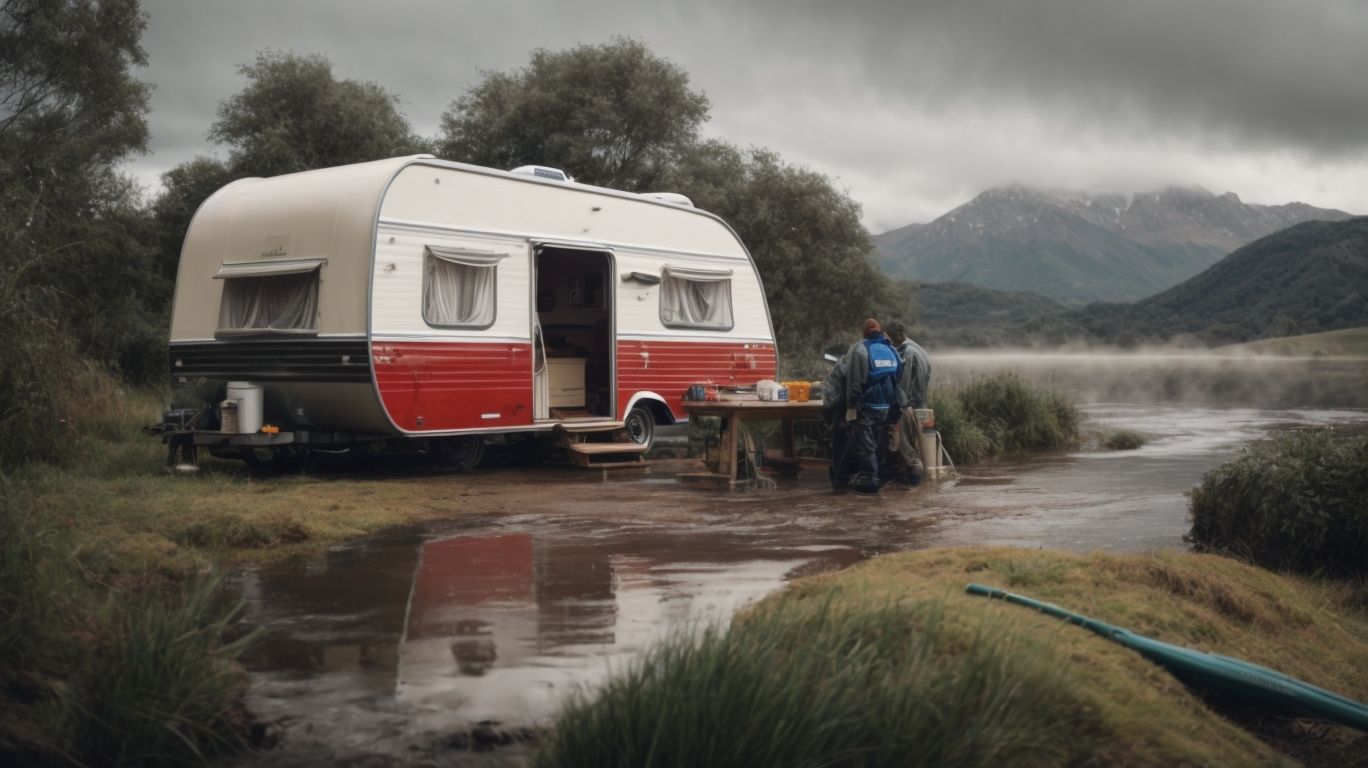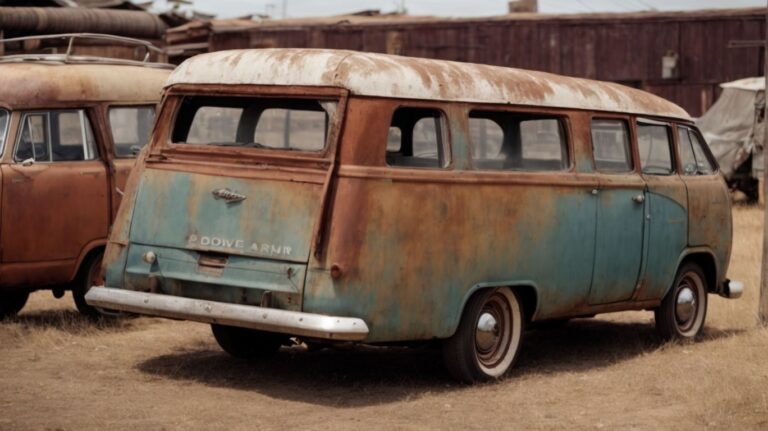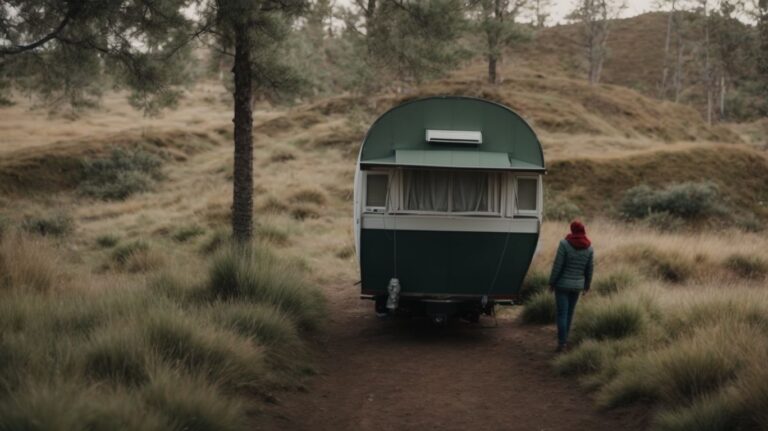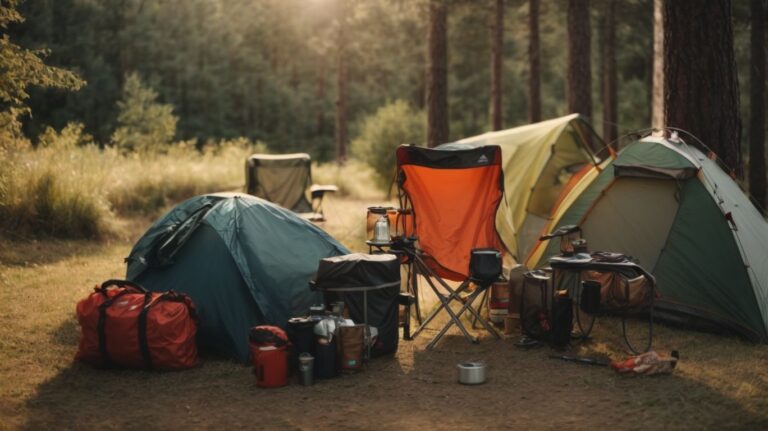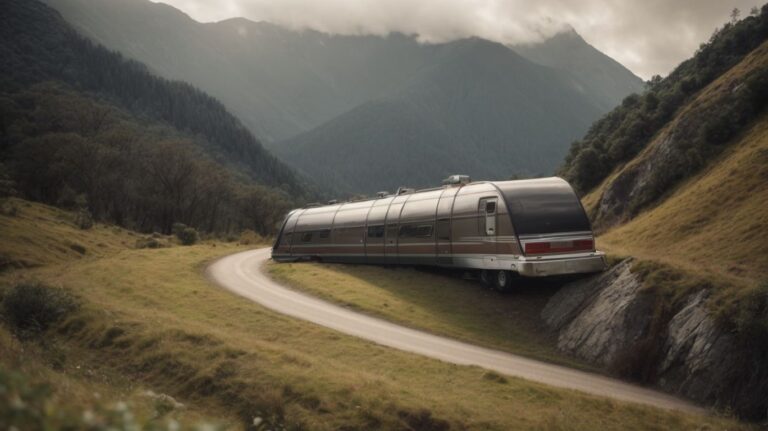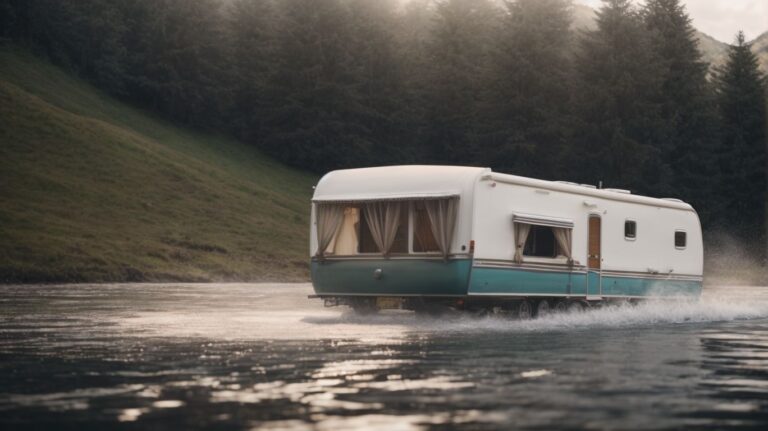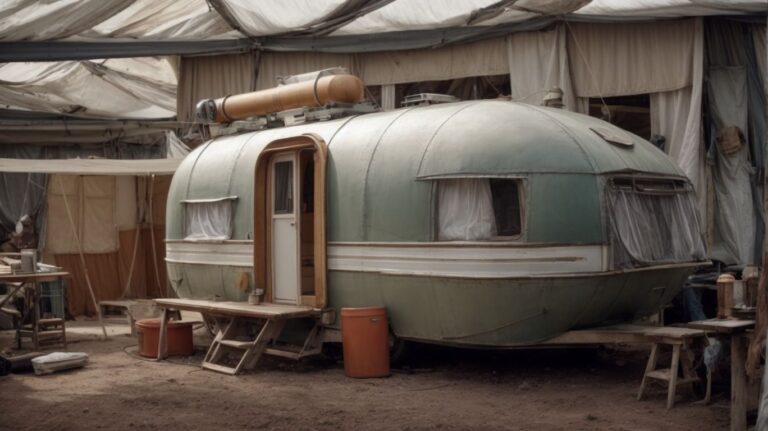Preventing Water Ingress in Caravans: Maintenance Tips
Water ingress in caravans is a common issue that can lead to serious consequences if not addressed promptly.
In this article, we will discuss the importance of preventing water ingress, how to detect and check for it, common causes and areas where it occurs, and tips for prevention.
We will also provide maintenance tips and materials to use to prevent water ingress, as well as steps to take for repairing any damage.
Learn how to keep your caravan safe from water damage.
Key Takeaways:
What Is Water Ingress in Caravans?
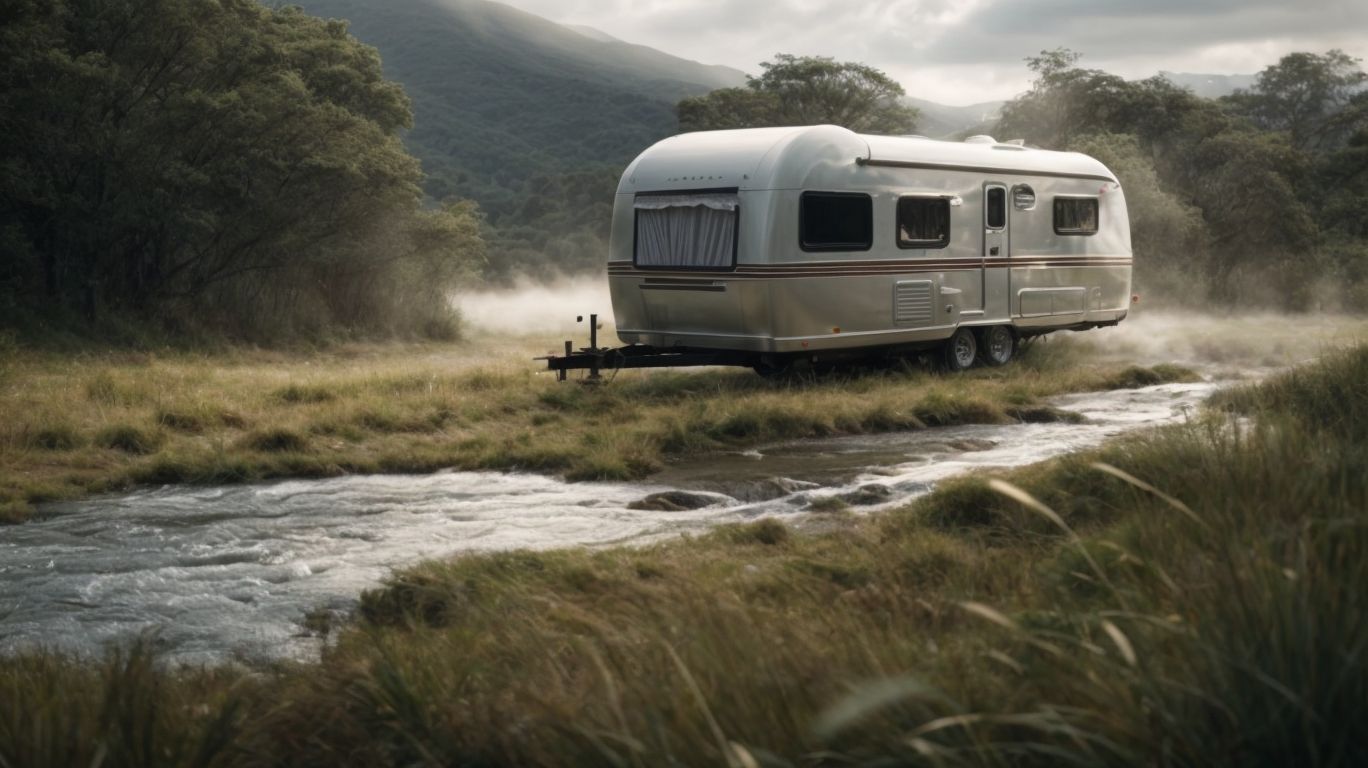
Credits: Motorcaravanning.Com – Roger Scott
Water ingress in caravans refers to the unwanted presence of water entering the interior of a caravan through seals or other entry points, leading to potential damages and structural issues.
Motion Activated RV Step Lights, 10 LED Battery Operated Motorhome Motion Sensor led Light Strip, Magnetic Night Light Bar for Motorhome Travel,Travel Trailers, Camper (2 Pack)
- 【Infrared Induction Motion Detection】Motion sensor light on the PIR sensor can detect human movement, 10 feet once your approach is detected, the rv step lights will automatically turn on in the dark, in the absence of detected motion or other light sources, 18 seconds after the automatic shutdown, a large degree of power savings and improved durability.
Camco TST MAX RV Toilet Treatment Drop-INs - Control Unwanted Odors & Break Down Waste and Tissue - Safe Septic Tank Treatment - Orange Scent, 30-Pack (41183)
- Toilet Deodorizer With Reactive Odor-Eliminating Technology: Experience a powerful RV odor eliminator that stops RV black tank odors for up to 7 days. Just (1) toilet drop in treats camper toilets with up to a 40-gallon tank.
THANSTAR Collapsible Dish Drying Rack Portable Dinnerware Drainer Organizer for Kitchen RV Campers Travel Trailer Space Saving Kitchen Storage Tray
- 【Food Grade Material】Made from eco-friendly PP+TPR material that is BPA Free and Food-Grade. The flexible material allows the dish strainers for kitchen counter to collapse flat for easy space-saving and storage, making the most of your kitchen countertop.
Camco RhinoFLEX 20-Ft RV Sewer Hose Kit - Features Clear Elbow Fitting w/Removable 4-in-1 Adapter - Connects to 3” Slip or 3”/3.5”/4” NPT Threaded Sewer Connection (39742)
- Superior RV Tank Dumping: Streamline RV holding tank dumping with Camco’s RhinoFLEX 20' Camper Sewer Hose Kit. Built tough & flexible, this all-inclusive RV septic hose system provides simple & effective tank dumping on your camping adventures.
Camco Tastepure RV Water Filter - New & Advanced RV Inline Water Filter with Flexible Hose Protector - GAC & KDF Water Filter - Made in USA - Camping Essentials for Fresh Drinking Water (40043)
- Advanced 6-Step Filtration Technology: Experience the extraordinary power of Hex-Flow Technology & its remarkable 6-step filtration process. Every layer works together to provide you with water that is exceptionally clean.





When water ingress occurs, it can seep into areas that are not easily visible, causing hidden damage over time. Moisture inside the caravan can lead to mold growth, affecting indoor air quality and posing health risks to occupants.
- One of the common consequences of water ingress is rotting of the caravan’s wood structure, compromising its stability and safety.
- Electrical components can be damaged, increasing the risk of short circuits and fire hazards.
It is crucial to detect and address water ingress promptly to prevent these issues and maintain the longevity of the caravan.
Why Is It Important to Prevent Water Ingress?
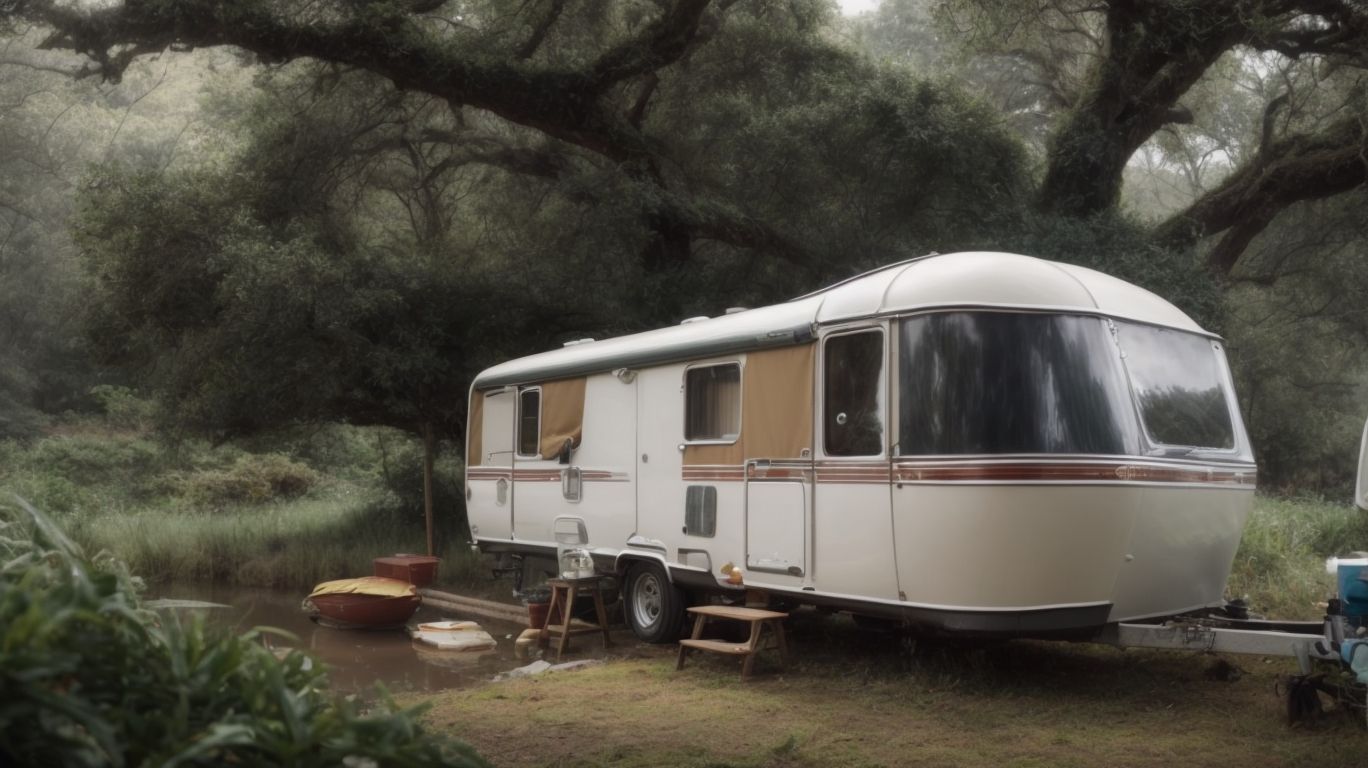
Credits: Motorcaravanning.Com – Jose Campbell
Preventing water ingress is crucial for preserving the structural integrity of caravans, avoiding costly repairs, and mitigating the risk of damages such as timber framing rot and mould growth.
Water ingress may seem like a minor issue at first glance, but its consequences can be far-reaching and detrimental to the overall condition of your caravan. Moisture infiltrating the caravan’s interior can lead to rust, corrosion, and electrical malfunctions, ultimately compromising not only its appearance but also its functionality.
- By regularly inspecting and maintaining seals around windows, doors, roof vents, and other entry points, you can significantly reduce the likelihood of water seepage.
- Investing in high-quality sealants and promptly addressing any signs of wear or damage can extend the lifespan of your caravan and preserve its resale value.
What Are the Consequences of Water Ingress?
Water ingress in caravans can lead to severe damages, including timber framing decay, mould and fungus growth, exacerbated by factors like coastal air exposure.
When water penetrates the caravan’s structure, it can gradually deteriorate the timber framing, compromising the overall integrity and structural strength. This decay not only weakens the framework but also poses safety risks for occupants.
The presence of moisture from water ingress creates an ideal environment for mould and fungus to thrive, spreading rapidly within the confined spaces of the caravan. This not only affects the aesthetics of the interior but also poses health hazards, especially for individuals with respiratory issues.





Coastal air or sea breeze, laden with moisture and salt particles, can significantly accelerate these damages. The high humidity levels associated with coastal regions provide an additional challenge, promoting the growth of mould and fungus, and creating a damp atmosphere inside the caravan.
How Can You Detect Water Ingress?
Detecting water ingress in caravans involves a thorough inspection of seals, visible damage, and interior areas for signs of leaks or water stains.
One of the primary ways to identify water ingress in caravans is through visual inspections. Look for any discoloration, mold, or musty odors, as these can indicate moisture issues. Checking for water stains on ceilings, walls, or floors can also provide clues. By inspecting the exterior, pay attention to any cracks, gaps, or worn seals that could serve as potential entry points for leaks.
What Are the Signs of Water Ingress?
Signs of water ingress in caravans may include visible water marks, a damp smell, or the presence of mould and mildew, indicating potential leaks or moisture penetration.
When inspecting a caravan for water ingress, keep an eye out for discolored patches on walls or ceilings, which could signal previous or ongoing water leaks.
A musty odor, especially when entering the caravan after it has been closed up for a while, can be a clear indication of dampness.
Mould and mildew growth is often a result of prolonged exposure to moisture, so any visible signs of these should not be ignored.
Regularly checking for these common signs can help caravan owners detect leaks early on, preventing costly repairs and safeguarding the structural integrity of their vehicle.
How Can You Check for Water Ingress?
Checking for water ingress in caravans involves inspecting roof seals, window frames, and seams for any signs of damage or wear that could lead to water leaks.
Water ingress can cause significant damage to a caravan if left unchecked, leading to issues like mold, rot, and structural deterioration.





- To thoroughly inspect the roof seals, conduct a visual check for cracks, gaps, or missing sealant.
- Pay attention to the window frames for any gaps or deteriorated seals that could allow water penetration.
- Examine the seams carefully, looking for any loose or damaged areas that may compromise the caravan’s water resistance.
Regular inspections should be part of your caravan maintenance routine, ideally done before and after the camping season to catch any potential problems early and prevent costly repairs down the line.
What Are the Causes of Water Ingress in Caravans?
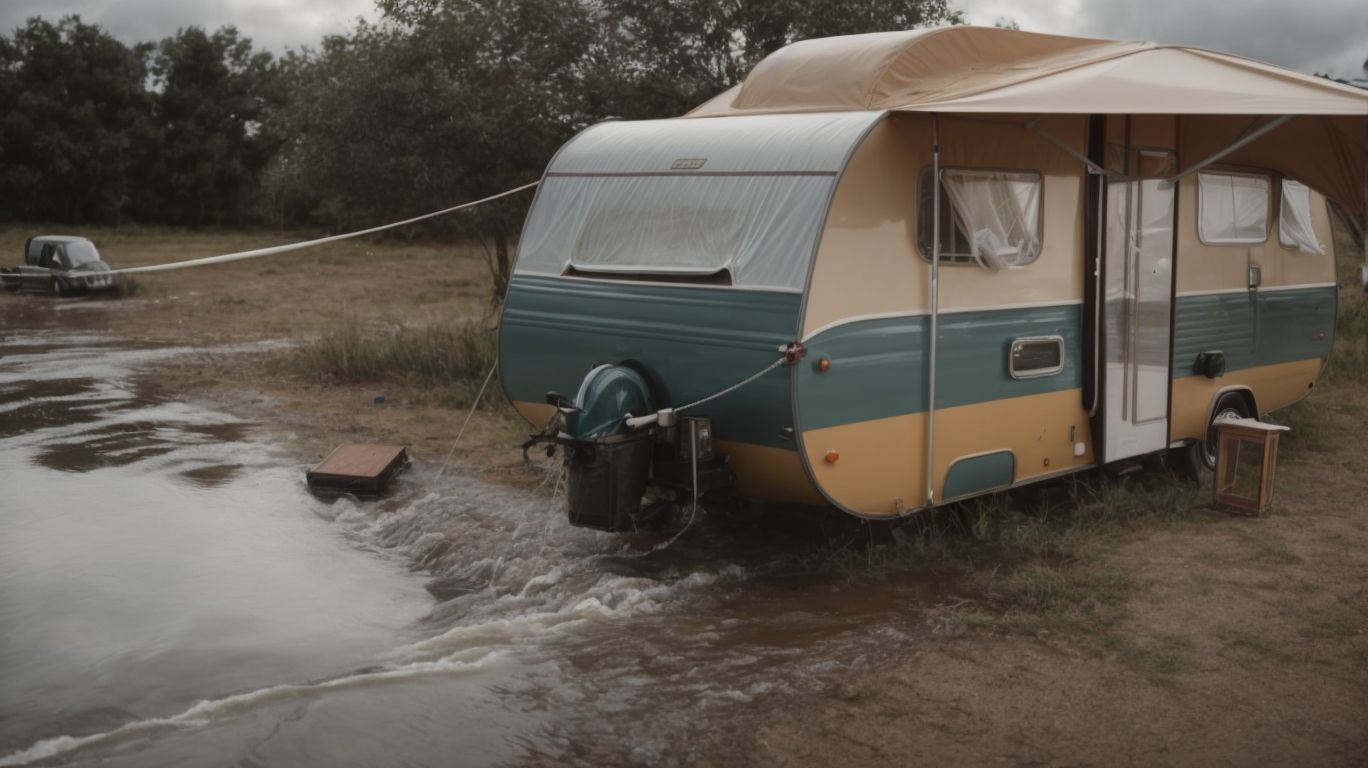
Credits: Motorcaravanning.Com – Randy Adams
Water ingress in caravans can be caused by faulty seals, damaged roof seals, or issues with plumbing, with common areas of concern being the roof, windows, and entry points.
In terms of faulty seals, the rubber seals around windows, doors, and storage compartments are often culprits. Over time, these seals can degrade due to exposure to sunlight and harsh weather conditions, leading to gaps that allow water to seep in. Roof seal damages, on the other hand, are commonly found in areas where the sealant has cracked or peeled away, leaving vulnerable spots for water to penetrate.
Plumbing issues, such as leaking pipes or fittings, can also result in water ingress within a caravan. It is essential to regularly inspect the plumbing system to identify and address any leaks promptly.
External factors like coastal air can exacerbate water ingress problems. The high humidity and salt content in coastal environments can accelerate corrosion and deterioration of seals and surfaces, making them more prone to leakages.
What Are the Common Areas Where Water Ingress Occurs?
Common areas where water ingress occurs in caravans include roof seals, window frames, and areas around plumbing fixtures, which are prone to leaks and water entry.
Roof seals are a common culprit for water leaks in caravans due to exposure to the elements and natural wear and tear over time. The constant expansion and contraction of the caravan structure can cause roof seals to degrade, leading to gaps where water can seep in.





Window frames, especially those with faulty seals or cracks, are another vulnerable area where water can enter. The pressure from wind and driving can also exacerbate the likelihood of leaks around poorly sealed windows.
Areas around plumbing fixtures, such as sinks, toilets, and showers, are prone to leaks if not properly maintained. The connections and seals in these fixtures can deteriorate, allowing water to escape into the caravan interior.
To prevent water ingress in these areas, regular inspection and maintenance are key. Checking and resealing roof seals, inspecting and resealing window frames, and ensuring that all plumbing fixtures are in good working condition can greatly reduce the risk of leaks. Using high-quality sealants and regularly monitoring these vulnerable points can help caravan owners avoid costly water damage repairs and maintain the integrity of their vehicle.
Are There Any External Factors That Can Contribute to Water Ingress?
External factors like coastal air or sea breeze can contribute to water ingress in caravans by accelerating seal deterioration and promoting moisture infiltration.
Coastal air and sea breeze contain high levels of salt particles, which can be corrosive to the seals and surfaces of caravans, making them more susceptible to wear and tear.
The constant exposure to these elements can weaken the protective barriers of the caravan, creating gaps and cracks where water can seep through, leading to potential leaks.
How Can You Prevent Water Ingress in Caravans?
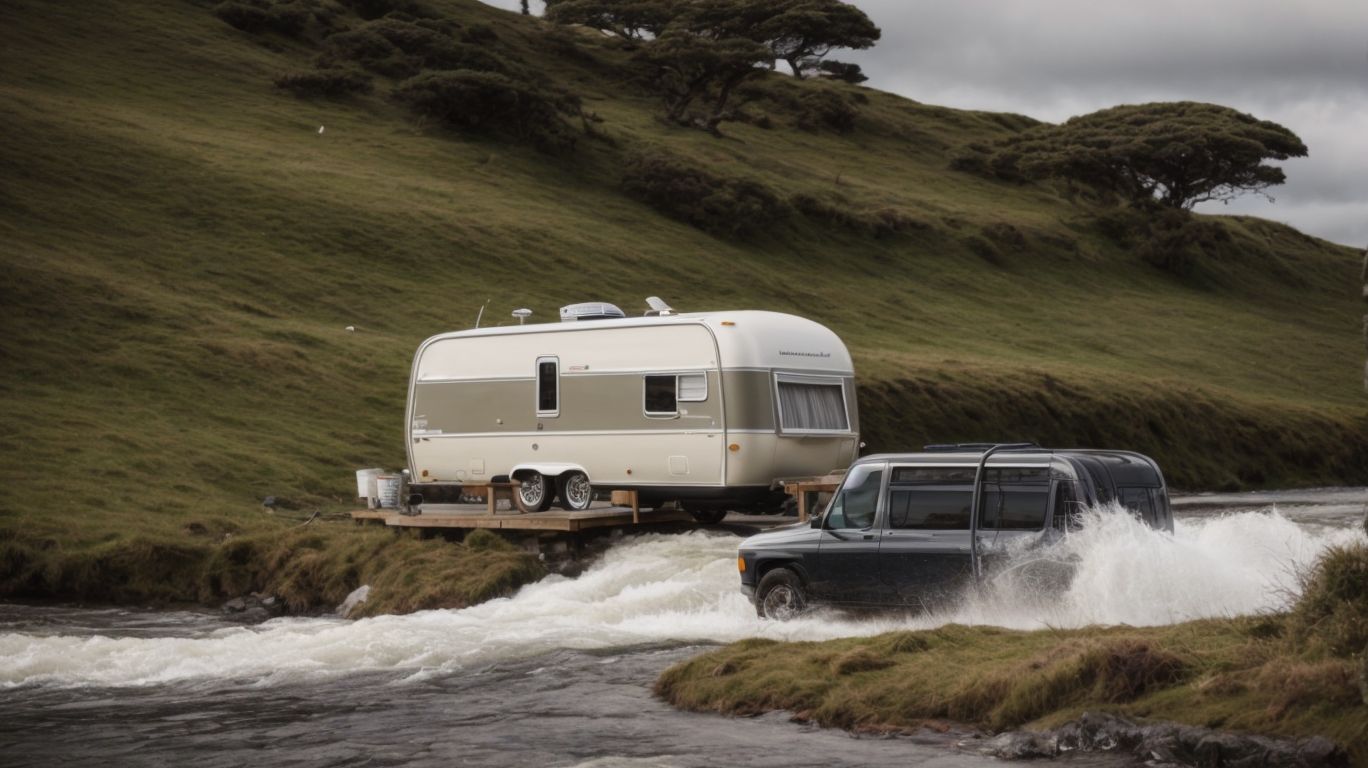
Credits: Motorcaravanning.Com – Terry Hill
Preventing water ingress in caravans requires regular maintenance, the use of high-quality seals, and the application of neutral-cure sealants to ensure effective water leak prevention.





Regular maintenance practices play a crucial role in averting water infiltration in caravans. Inspecting seals, including those around windows, doors, and roof fixtures, can identify potential weak points that may allow water entry. Properly maintaining these seals by cleaning and resealing them as needed can significantly reduce the risk of leaks.
Quality seals are critical in creating a watertight barrier for caravans. Opting for reputable, durable seals specifically designed for caravan use can offer long-lasting protection against water ingress. Investing in high-quality components can save time and money in the long run by preventing costly water damage repairs.
In terms of sealants, choosing neutral-cure sealants is highly recommended. These sealants are non-corrosive and do not emit strong odors during curing, making them ideal for indoor applications. Their superior adhesive properties ensure a strong bond with various surfaces, enhancing the effectiveness of the seal and minimizing the chances of water penetration.
Aftermarket accessories such as awnings, vent covers, and gutter systems can complement existing seals and further bolster defense mechanisms against water intrusion. These accessories not only enhance the aesthetics of the caravan but also serve practical purposes by diverting water away from potential entry points.
Regular Maintenance Tips
Regular maintenance is essential to prevent water ingress in caravans, including inspecting seals, applying silicone, and using aftermarket accessories for enhanced protection.
Inspecting the seals around windows, doors, and other potential entry points is crucial as even small gaps can lead to water seepage. Ensure to check the condition of the seals regularly and replace any damaged ones promptly to maintain a watertight barrier.
Application of silicone along seams and joints can provide an additional layer of protection against leaks. Choose a high-quality silicone sealant suitable for outdoor use and reapply it when signs of wear or cracking appear.
Investing in aftermarket accessories such as awnings, gutter systems, and vent covers can further safeguard your caravan from water damage. These add-ons are designed to enhance the waterproofing capabilities of your vehicle, offering extended protection in varied weather conditions.
What Are the Best Materials to Use to Prevent Water Ingress?
The best materials to prevent water ingress in caravans include high-quality silicone for seal repairs and neutral-cure sealants for effective leak prevention and long-lasting protection.
Silicone is a versatile material known for its excellent adhesion to various surfaces, flexibility, and resistance to weathering, making it ideal for sealing seams, gaps, and joints in caravan exteriors. This elasticity allows it to expand and contract without losing its sealing properties, crucial for withstanding the constant movement and vibrations experienced during travel.





Neutral-cure sealants, on the other hand, are specifically formulated to avoid chemical reactions that could harm caravan materials, ensuring compatibility and preventing damage. Their non-corrosive composition makes them safe to use on a wide range of surfaces without causing discoloration or degradation over time.
What Should You Do If You Discover Water Ingress in Your Caravan?
If you discover water ingress in your caravan, it is crucial to promptly repair the damage, address the root cause of the leak, and take preventive measures to avoid future water ingress issues.
Immediate repairs involve locating the entry point of the water and sealing it using appropriate sealants or tapes. This could include fixing damaged seals around windows, doors, or roof vents. Once the visible repair is done, it’s essential to inspect the interior for any signs of water damage, such as mold, dampness, or discoloration.
To identify leak sources, carefully inspect the caravan’s exterior for cracks, gaps, or damaged areas where water can seep in. Common culprits include worn-out seals, damaged roof components, or improperly sealed joints. Consider checking seams, corners, and areas around fixtures for any potential vulnerabilities.
- Implementing preventive solutions includes conducting regular inspections to spot potential leakage points before they turn into full-blown issues.
- Applying protective coatings to susceptible areas, such as the roof and seams, can help create an additional barrier against water ingress.
- Maintaining proper sealant integrity and addressing any wear and tear promptly can significantly reduce the risk of water intrusion.
Steps to Take for Repairing Water Ingress Damage
Repairing water ingress damage in caravans involves identifying the source of the leak, replacing damaged seals, and addressing any structural issues to restore the caravan’s integrity.
When dealing with water ingress, thoroughness is key. The first step is locating the leak, a process that may require inspecting all potential entry points carefully. Common sources include damaged seals around windows, doors, or roof vents. Once the source is identified, the next crucial task is replacing these seals promptly. Neglecting worn-out seals can lead to ongoing leaks, causing further damage and potentially compromising the caravan’s structure.
How Can You Prevent Future Water Ingress After Repair?
To prevent future water ingress after repair, conduct regular inspections, reapply sealants as needed, and maintain vigilant upkeep to ensure the caravan remains protected from leaks.
Regular inspections are essential to identify any signs of wear or damage to the seals or surfaces. Make sure to check areas prone to water penetration such as seams, vents, windows, and roof joints. If any cracks or gaps are noticed, address them promptly to prevent water from seeping in.
When reapplying sealants, ensure to use high-quality products recommended for your caravan’s material. Thoroughly clean and dry the area before applying the sealant to ensure maximum adhesion and effectiveness.
Ongoing vigilance is key in maintaining the integrity of the repairs. Keep an eye out for any discoloration, bulging, or dripping inside the caravan, as these could be early signs of water ingress. Address any issues immediately to prevent further damage.





Frequently Asked Questions
How can I prevent water ingress in my caravan?
Water ingress in caravans can be prevented by regularly inspecting and maintaining your caravan’s exterior, including the roof, windows, and doors. You should also check for any cracks or holes in the walls, sealants, and joints, and repair them immediately.
How often should I inspect my caravan for water ingress?
It is recommended to inspect your caravan for water ingress at least twice a year, before and after the winter season. However, if you notice any signs of water damage, such as dampness or mold, it is important to inspect and address the issue immediately.
What are some common causes of water ingress in caravans?
The most common causes of water ingress in caravans include damage to the roof, worn out sealants, cracks or holes in the walls, and faulty windows or doors. It is important to regularly check and maintain these areas to prevent water ingress.
How can I maintain my caravan’s roof to prevent water ingress?
To maintain your caravan’s roof, you should regularly clean it and check for any damage or wear. It is also important to keep the gutters and drainage system clear to prevent water from pooling on the roof. Consider resealing the roof every few years to ensure it remains watertight.
Are there any specific products I can use to prevent water ingress in my caravan?
There are various products available in the market specifically designed for preventing water ingress in caravans. These include sealants, repair tapes, and waterproof coatings. Be sure to choose products that are suitable for your caravan’s materials and always follow the manufacturer’s instructions.
What should I do if I notice water ingress in my caravan?
If you notice any signs of water ingress in your caravan, such as dampness, mold, or water stains, it is important to address the issue immediately. This may involve repairing any damage, resealing areas, and drying out the affected area to prevent further damage. If the issue is severe, it is best to seek professional help.

